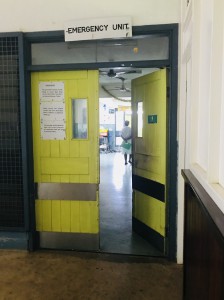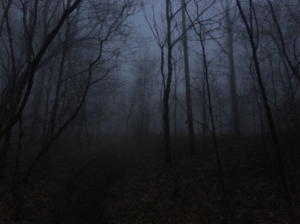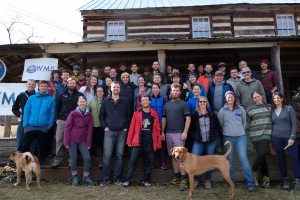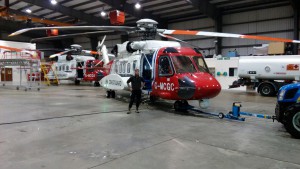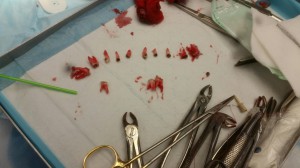Arriving on the beautiful island of Santo Espiritu in Northern Vanuatu I was ready to hit the ground running and submerge myself in my first elective placement. I could already tell by the flight over the island that I was in for an interesting month here. The buildings were mostly concrete block with tin or palm roofs and the main centre of Luganville was tiny (even by New Zealand standards). The main industries on the island seem to be farming, fishing and tourism with the former two grinding to a halt for the latter when the cruise ships arrive in port.
Archive for 'News'
The pinnacle of my entire elective and possibly all of medical school for me was being the medical and transport director of a simulated mass casualty incident. This occurred on the last night of the wilderness first responder course during my wilderness medical elective. I really enjoy taking on leadership positions and this really pushed me to my limits.
The third month of my elective was probably my favourite month of the entire of medical school. I first heard about the Wilderness Medicine Societies student elective in 2016 and knew from then on that I wanted to be a part of it. I have done a few weekend wilderness medicine courses before, during 3rd and 4th year so it fantastic to learn new things and reinforce previous knowledge and skills. I made sure I was 1st quarter elective so I would be able to participate in this course and applied for it the day applications opened. › Continue reading…
For the second part of my elective, I was doing General Practice in Unst and Lerwick Health Centres in the Shetland Islands, Scotland.
For those that have no idea where the Shetland Islands are. They are 170km north of mainland Scotland. They are an archipelago of islands in the North Sea. The main industries are fishing, oil, agriculture and tourism. Medicine in Shetland is, like back home, based predominantly around general practice. There is one base hospital based in Lerwick. Gilbert Bain Hospital is a small secondary hospital with four surgical consultants and four medical consultants, a couple of anaesthetists and a handful of house officers. Along with the nurses and the allied health team, the whole hospital is run smoothly. The A and E department is run by house officers, one surgical and one medical who call in the on-call consultant based in the hospital if needed. › Continue reading…
While I was traveling on the Mobile Surgical Bus a lot of the lists performed in the North Island were paediatric dental lists. These are children that have failed to have dental work done successfully in a normal dental clinic due to the difficulty of the procedure or inability of it to be performed on an awake child. These kids would, therefore, have their dental work done under general anaesthetic. Lists normally had about seven to ten children per day depending on the amount of time needed for each procedure. These children could be anywhere from two to 15 years old, most were normally in the four years to eight years’ age group. › Continue reading…
Mobile Surgical services, what a whirlwind way to tour New Zealand and get to assist in improving rural health care throughout rural NZ. This was the way I spent the first month of my elective. After a minor hitch with booking my time on the surgical bus everything was sorted for me to meet up with the mobile surgical bus in Queenstown on the 20th of November 2017, 2 weeks after sitting my final 5th-year exams, and 1 week after finding out I actually passed them. (WoooHooo!!!) I managed to get this amazing elective set up thorough MSS’s General Manager Mark Eager and their mastermind and Clinical Director Dr. Stu Gowland. › Continue reading…
Garry Nixon, Jeremy Webber, Mark Smith and Harriet Miller are a like-minded group of rural hospital doctors and General Practitioners who will be competing in the 2018 GODZone multisport event. Through this adventure, they hope to raise awareness about rural medicine in New Zealand through the Pat Farry Rural Education Trust and to highlight the fundamental role of exercise, teamwork, and endeavour in improving the health of New Zealanders.
According to the ‘aged one’ Garry Nixon, “to become a rural hospital doctor requires an adventurous spirit, a mild adrenaline addiction, commitment, motivation and the ability to problem solve when situations spiral out of control. These skills and personality traits will bring this team to the finish line of a race such as GODZone.” › Continue reading…
 The Pat Farry Rural Health Education Trust is excited to announce that we will be hosting various fundraising activities at the National Rural Health Conference this year.
The Pat Farry Rural Health Education Trust is excited to announce that we will be hosting various fundraising activities at the National Rural Health Conference this year.
New to the social programme is the Pat Farry Trust fundraiser dinner ‘authentic Lebanese family cuisine’ at Gemmayze St on Friday 6th April from 7:00 pm.
`Gemmayze St is the brainchild of chef, Samir Allen, (Pat Farry’s nephew) a talented young chef whose roots are deeply entrenched in his Lebanese heritage. After pursuing his dream of a pilgrimage back to Lebanon to study the gastronomic practices of his patrimony he returned to Auckland to open the amazing “GEMMAYZE ST.”
If you are attending the conference you can book the Pat Farry Trust dinner via the conference website or alternatively you can book here. Sue Farry and the Trust invite all supporters of the Trust including family and friends. › Continue reading…
Natasha Austin and Mark Owen-Cooper, fifth year medical students at the University of Otago School of Medicine, have been announced as the 2017/2018 recipients of the Pat Farry Rural Health Education Trust Travelling Scholarship by Sue Farry on behalf of the Pat Farry Rural Health Education Trust’s trustees. › Continue reading…
The Pat Farry Rural Health Education Trust has announced application details for its Travelling Scholarship for 2017/2018. The annual Pat Farry Rural Health Education Trust Travelling Scholarship awards up to $10,000.00, which may be divided between two recipients. The scholarship assists medical students to travel internationally to a rural situation to observe new concepts, develop their own skills and share their learning with other students when they return. › Continue reading…

